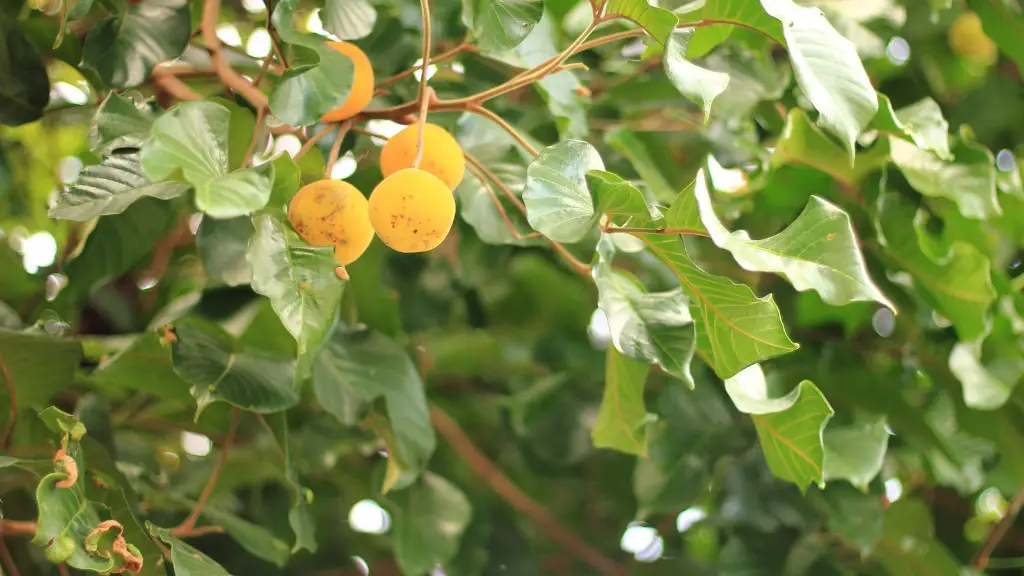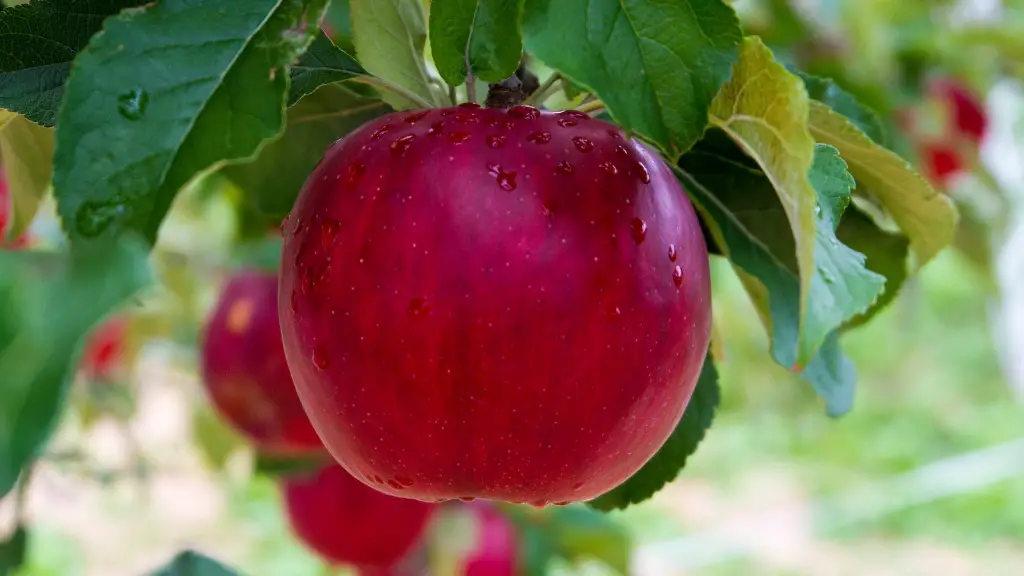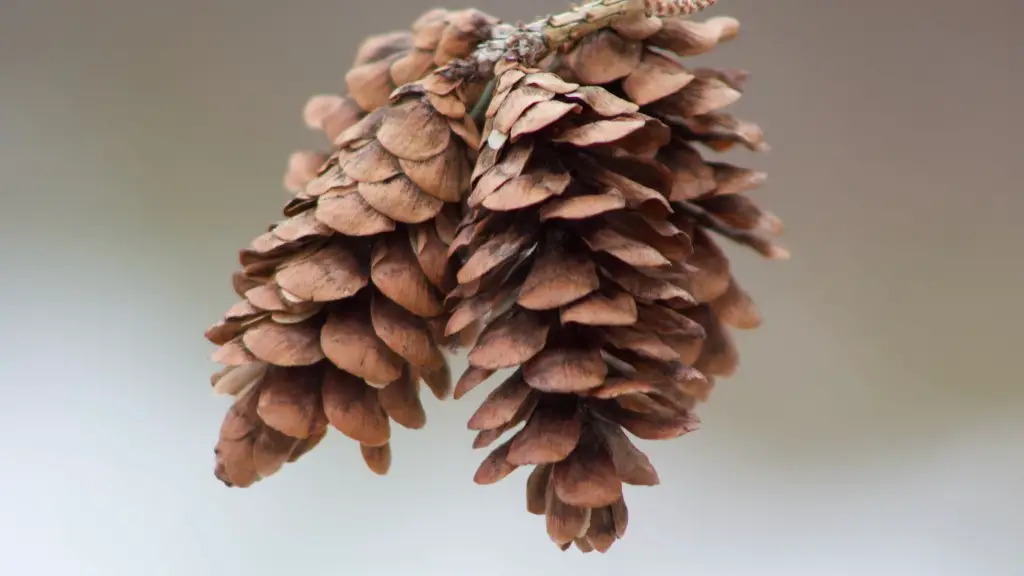The lemon tree is an evergreen citrus tree that produces fragrant, yellow fruits. Growing a lemon tree can be a rewarding experience, but sometimes it’s difficult to get the tree to flower. Here are some tips for how to make a lemon tree flower and get the most out of your lemon tree.
First of all, it is important to give the tree the right environmental conditions. The tree should be planted in a sunny, sheltered, and well-draining location, preferably in loamy soil. A location that gets plenty of sunlight, but not too hot, is the best choice for growing lemons. Watering is also essential. The soil should be kept moist but not wet. Too much water can make the tree develop “waterlog”, which will lead to fungal diseases.
Fertilizing the tree regularly is also important. A balanced fertilizer with equal parts of nitrogen, phosphorus, and potassium is best. Fertilizer should be applied every 3-4 months. Additionally, pruning the tree in late winter or early spring helps to stimulate flower production.
Lemon trees need sufficient amounts of calcium and magnesium to be able to flower. Applying calcium- or magnesium-rich fertilizers to the soil once a year can help keep levels of these essential minerals high. The pH of the soil should also be tested to ensure it’s acidic enough for the plant to thrive.
Finally, it is important to ensure the tree is healthy. Signs of an unhealthy tree include yellowing or wilted leaves, abnormally shaped fruits, and visible insect damage. If you notice any of these signs, take action immediately to ensure the tree will be able to flower. Leaves can also be sprayed with a copper-based fungicide to prevent fungal diseases.
Maintaining the Lemon Tree
In order for the lemon tree to flower, it is essential to maintain it properly. Pruning is important to encourage healthy leaves, branches, and fruit production. To prune, remove any dead or diseased branches and any misshapen growth. During this process, it’s important to prune the tree in such a way that the sunlight is allowed into the interior of the tree. This is necessary for citrus trees as they need to receive direct sunlight in order to produce fragrant and juicy fruits.
Another important element of maintenance is pest control. Aphids, green spiders, thrips, citrus leafminer, and mites are the most common pests that affect lemon trees. These pests can be controlled with natural sprays such as neem oil or insecticidal soap. Be sure to check for any signs of pest activity and apply the pesticide as soon as you notice any.
Finally, it is important to treat your lemon tree for diseases if necessary. Citrus canker, brown rot, and phytophthora root rot are the most common diseases that affect lemon trees. To prevent these diseases, it is advisable to spray the tree with a citrus-specific fungicide on a regular basis. And lastly, ensure that the tree is getting enough water, as this is essential for its growth and development.
Harvesting Lemon Fruits
Once your lemon tree flowers and produces fruits, it is important to harvest them at the right time. Most citrus fruits reach maturity in 3-5 months. Fruits should be harvested when they are deep yellow in color and slightly firm to the touch. Also, check the fruits for any infestations or disease, and discard any that have signs of this.
It’s better to harvest lemons while they are still green, as they are considered best for cooking. To pick them, twist the fruit gently, but firmly from the stem rather than pulling it off. Lastly, store the fruits in a cool, dry and dark place for the best shelf-life.
After Harvesting of the Lemon Fruits
Once your lemon tree has finished producing fruit, there are still some things you can do to keep it healthy. Pruning the tree to remove any unwanted growth, or any dead or diseased branches, is a good way to keep the tree in top condition. And, topping up any nutrients that may have been lost from the soil can also help the tree to recover from the harvest. Good fertilizers for this purpose include composted manure. Watering the tree on a regular basis will also help to keep it healthy and avoid any waterlogging.
Lastly, it is important to check for any signs of pests and diseases, especially if the tree has been damaged. If any are identified, take immediate action to treat by spraying with a suitable pesticide or fungicide.
Preventative Care to Avoid Pests and Diseases
Preventative care is the best approach to avoid pests and diseases affecting the lemon tree. Before planting, ensure that the area in which the tree is being planted is suitable, with good drainage and that the soil is not compacted. Also, check the pH of the soil to make sure it is acidic and that there is enough calcium or magnesium in the soil.
Regularly inspect the tree for any signs of pests and diseases. If any are identified, take immediate action to treat by spraying with a suitable pesticide or fungicide. Additionally, removing any fallen fruits or leaves to avoid any decaying matter that could attract pests and diseases is essential.
If possible, get help from a professional arborist to inspect the tree once a year to ensure it is being cared for correctly. Pruning is important to open up the canopy of the tree and allow sunlight to reach the interior branches and fruits. Finally, use a good quality but low-nitrogen fertilizer to ensure the tree is getting enough nutrients.
Correct Care of Lemon Trees
Providing the lemon tree with the correct care is essential for growing a healthy tree that will flower and produce bountiful fruits. Ensure that the tree is getting plenty of sunshine, but not too hot. Water the tree on a regular basis and only when the soil has dried out. Prune the tree regularly to stimulate flower production and open up the canopy of the tree to allow direct sunlight on the leaves and fruits.
Fertilize the tree at least 3-4 times a year with a balanced fertilizer, or use a harvest-specific fertilizer before the harvest time. Regularly monitor the tree for any signs of pest and disease activity and take action to treat if necessary. Lastly, topping up any nutrients that may have been lost from the soil can help the tree to recover.



